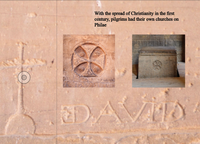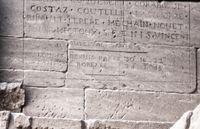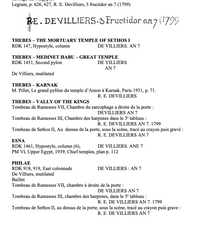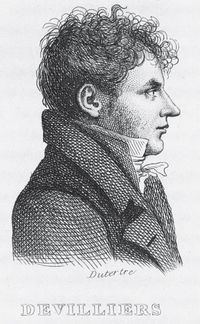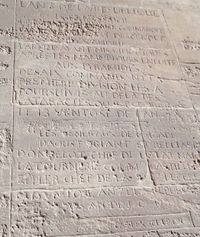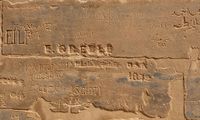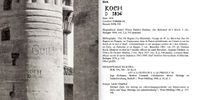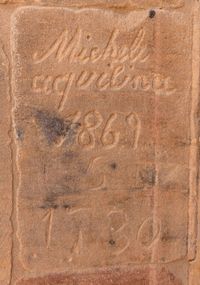PHILAE
Temple of Philae by David Roberts
Christian Pilgrims
Photo 8mm.media
The French Graffiti
De Villiers' had left several graffiti, Keersmaeker documented in Traveller's Graffiti over ten inscriptions.
While visiting Philae in 1799 De Villiers observed Jean-Jacques Castex (1731-1822) a sculptor who was part of the French Expedition, doing a graffiti:
"Castex is engraving the following inscription under the door of the pylon of the great temple:
E. De Villiers du Terrage, Journal et souvenirs sur l’expédition d’Égypte (1798-1801).
Mis en ordre et publiés par le Baron Marc de Villiers du Terrage, Paris 1899
Photo: A. Parrot
Travellers were aware of other graffiti, as some of them mentioned these later in their published travel journals. French authors viewed proudly the expedition's inscription, with some mentioning that they read the text out loud so others of the travelling group could hear. Listening with emotions, out of respect some taking of their hats, mentioning the french inscriptions as "a glorious page in our history", speaking of "touched us mostly", "making our french hearts beat" , seeing "our past glories", having a "feeling of national pride". The name Bonaparte has been removed, probably by a British traveller. Vice versa, British Consul Salt's name at Abu Simble has been removed as well, probably by a French visitor.
Photo by Diego Delso, 2022 (delso.photo)
KOCH, chief doctor travelling in 1836. Photo by Frank Mason Good & page from Keersmaecker's documentation Volume 3.
Alfred Brehm (1829-1884)
The German zoologist and writer Alfred Brehm traveled for five years in the 1850s to Egypt, Sudan, and the Sinai Peninsula. Unfortunately, his expedition got nearly canceled, due to continually delayed payments, which hindered his scientific research. Additionally, his stepbrother, the pharmacist Oskar (1823-1850), drowned in the Nile at Dongola, then part of Nubia. Despite the many challenges he faced, Brehm was able to successfully transport a wide variety of animal specimens and live animals to Germany and, as a result, his efforts earned him recognition in the scientific community.
Alfred Brehm's graffiti, left in an astonishing good condition even though parts of Philae having been under water. Photo 8mm.media
Photo by Diego Delso, 2022 (delso.photo)

